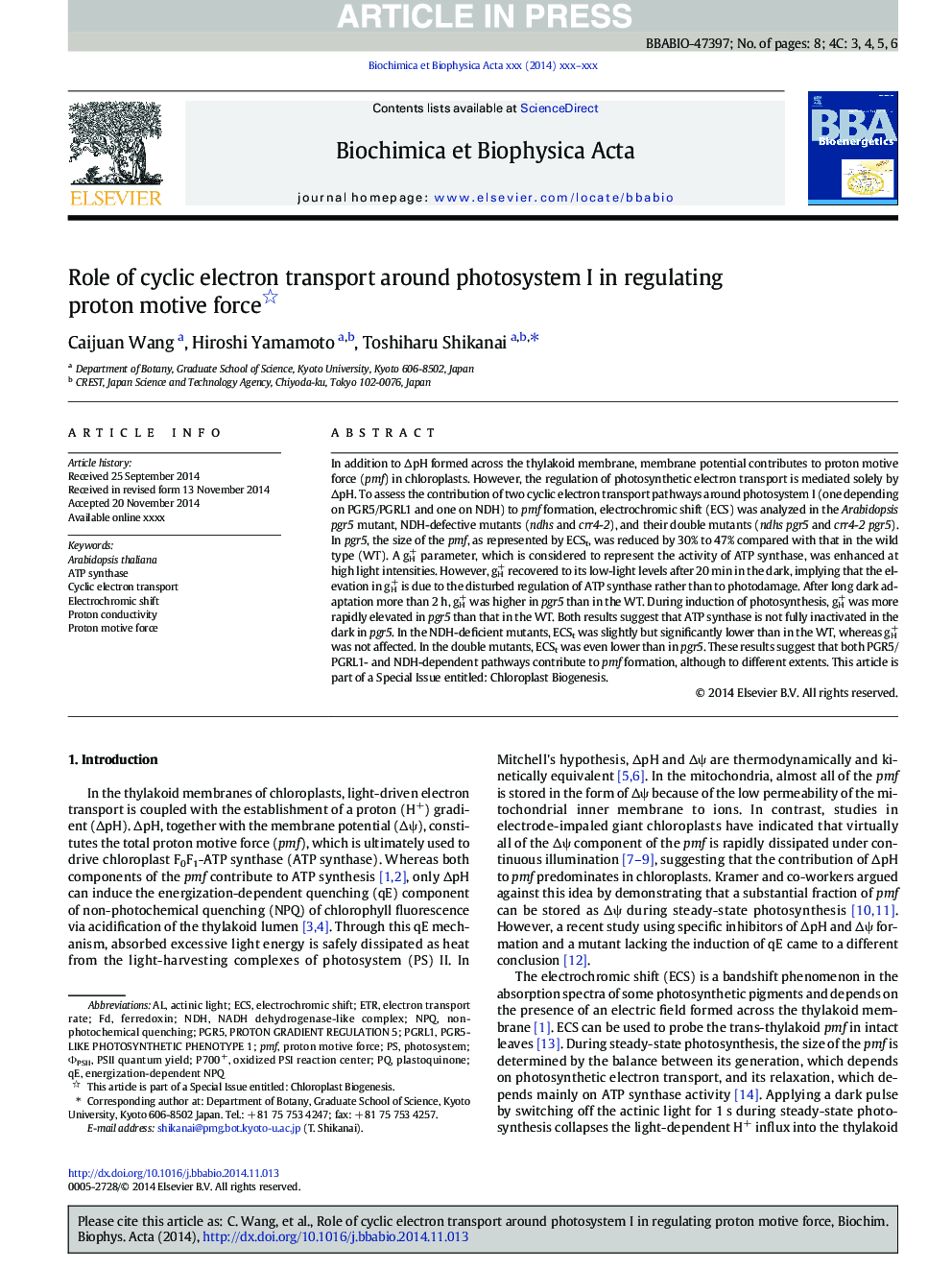| Article ID | Journal | Published Year | Pages | File Type |
|---|---|---|---|---|
| 10795383 | Biochimica et Biophysica Acta (BBA) - Bioenergetics | 2015 | 8 Pages |
Abstract
In addition to âpH formed across the thylakoid membrane, membrane potential contributes to proton motive force (pmf) in chloroplasts. However, the regulation of photosynthetic electron transport is mediated solely by âpH. To assess the contribution of two cyclic electron transport pathways around photosystem I (one depending on PGR5/PGRL1 and one on NDH) to pmf formation, electrochromic shift (ECS) was analyzed in the Arabidopsis pgr5 mutant, NDH-defective mutants (ndhs and crr4-2), and their double mutants (ndhs pgr5 and crr4-2 pgr5). In pgr5, the size of the pmf, as represented by ECSt, was reduced by 30% to 47% compared with that in the wild type (WT). A gH+ parameter, which is considered to represent the activity of ATP synthase, was enhanced at high light intensities. However, gH+ recovered to its low-light levels after 20Â min in the dark, implying that the elevation in gH+ is due to the disturbed regulation of ATP synthase rather than to photodamage. After long dark adaptation more than 2Â h, gH+ was higher in pgr5 than in the WT. During induction of photosynthesis, gH+ was more rapidly elevated in pgr5 than that in the WT. Both results suggest that ATP synthase is not fully inactivated in the dark in pgr5. In the NDH-deficient mutants, ECSt was slightly but significantly lower than in the WT, whereas gH+ was not affected. In the double mutants, ECSt was even lower than in pgr5. These results suggest that both PGR5/PGRL1- and NDH-dependent pathways contribute to pmf formation, although to different extents. This article is part of a Special Issue entitled: Chloroplast Biogenesis.
Keywords
Related Topics
Life Sciences
Agricultural and Biological Sciences
Plant Science
Authors
Caijuan Wang, Hiroshi Yamamoto, Toshiharu Shikanai,
